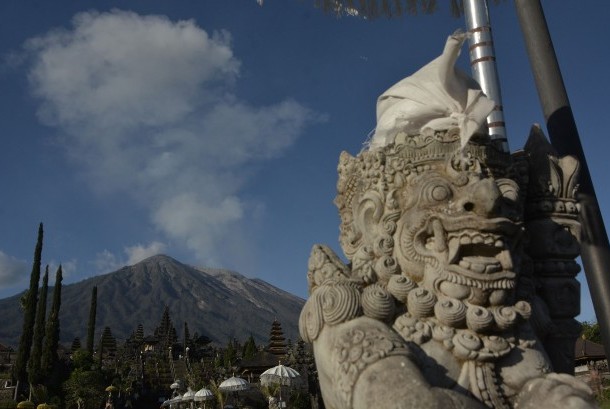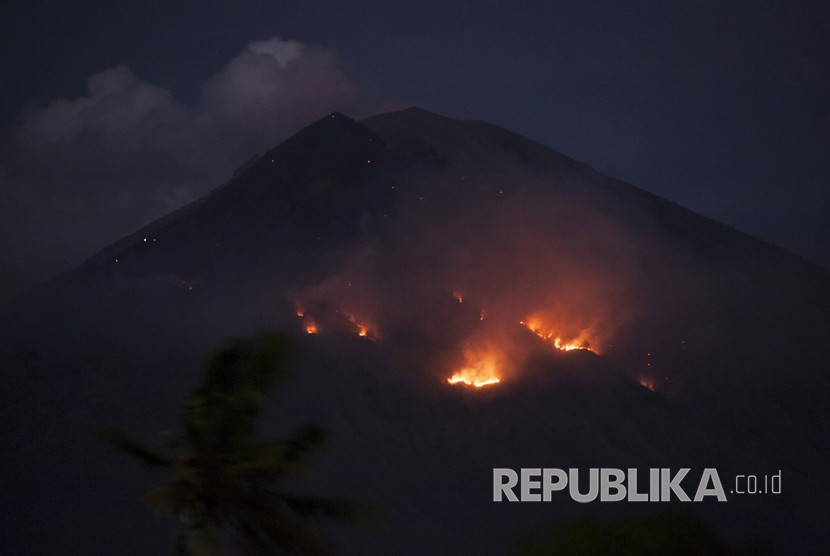REPUBLIKA.CO.ID, JAKARTA -- The Volcanology and Geological Disaster Mitigation Center (PVMBG) reported that Mount Agung erupted at 9:04 pm local time on Monday, spewing in high intensity smoke columns, along with lava up to two kilometers high from its crater. The smoke rose 2,000 meters from the top of Mount Agung, or 5,142 meters above the sea level (mdpl).
The center further stated that the seismograph recorded that the blast occurred by 24 millimeters in amplitude for seven minutes and 21 seconds. "The smoke moves to the west, and some sounds are heard during the eruption," it added.
Despite of the blast, the Meteorology, Climatology, and Geophysics Agency (BMKG) has not yet raised the current alert status of Mount Agung, which remained in the second-highest alert level III.
Also read: Volcanic ash from Mt Agung spreads to two areas
The Volcanology Center has called on all people to avoid activities within a four kilometer radius from the crater. However, the danger zone's coverage is still being evaluated, following updates on the volcano's activity.

Mount Agung seen from Besakih, Karangasem, Bali, Monday (July 2).
Besides villagers who live in the disaster-prone areas, the Volcanology Center also asked people whose homes near rivers to remain vigilant on cold lava flow.
Since June 27 to July 2, the volcano has consistently spewed smoke columns and volcanic ashes that rose by 200 m to 2,500 m from the crater. Besides, some red glows were seen from the top of Mount Agung.
Before spewing lava, the volcano also blasted at 06:19 am local time and 06:55 am on Monday (July 2).
For further updates on the volcano, the Volcanology Center released information on "https://magma.vsi.esdm.go.id".


